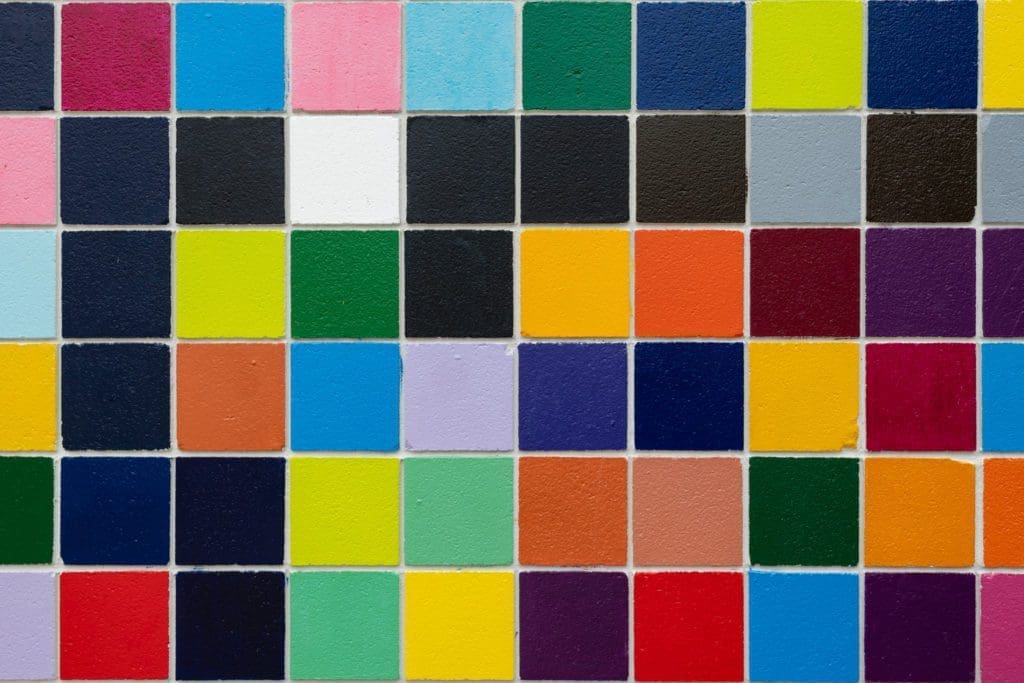
Square tiles are one of the most simple and versatile math manipulatives you can have in your classroom. They are one inch colored plastic squares. In the resources section below I will also link virtual versions for use on the computer or Ipad, and free printable paper versions. You can also buy one inch colored paper squares to connect math and art. While these are all useful, I highly recommend buying the physical manipulatives as they can greatly build your students’ conceptual understanding.
Understanding Multiplication and Area
While you can use square tiles to teach many topics, the most important is understanding multiplication and area. While you can use any object to make a multiplication array, using squares allows students to see that any multiplication fact is represented by a square or rectangle. This is a natural introduction to the term square root – 3rd graders easily see that a number times itself makes a square. Using this method builds their conceptual understanding of calculating area. They will discover why they can find area of a rectangle by multiplying length times width, and why they measure the answer in square units. (For more on teaching area and perimeter, see this page)
Other topics for square tile math manipulatives:
- Discovering patterns on the number chart. Square tiles fit perfectly on a grid, so use them to find patterns on the hundred chart or multiplication table.
- Addition permutations- Give students a number and have them show different ways of representing it by combining colored tiles. 1 blue square + 9 green squares, 2 blue squares + 8 green squares, etc.
- Represent prime factorization. (each tile would be assigned the number of a prime factor, so for example if yellow is 2 and red is 7 28 might be represented by 2 yellows and 1 red)
- Patterning. From simple color patterns to more complex growing figures.
- Develop spatial reasoning. Find all tetraminoes, pentominoes, and hexominoes. This means all the ways you can arrange either four, five, or six tiles respectively, so that one complete side of each tile touches at least one complete side of another tile. I have a page about pentominoes and also refer to them in my page about teaching area and perimeter.
- Make bar graphs. You can quickly make a bar graph on by having children place square tiles.
- Probability. These are perfect to draw from a bag or box and determine probability of what color you will get.
- Finding the unknown number in an equation – cover a number with a square tile and figure the strategy for determining what it is
- Modeling fractions
- Ratio and proportion
